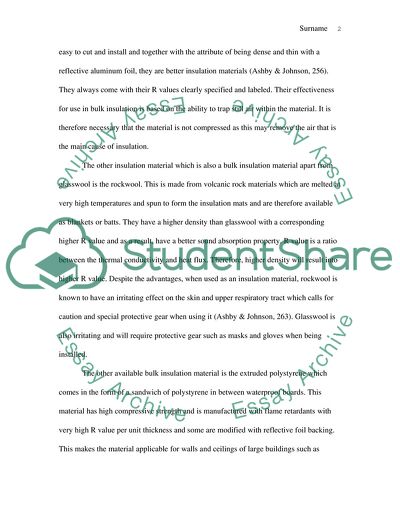Selection of Insulation Materials for a Civil Engineering Structures Term Paper. https://studentshare.org/engineering-and-construction/1760987-materials-selection-for-civil-engineering-application
Selection of Insulation Materials for a Civil Engineering Structures Term Paper. https://studentshare.org/engineering-and-construction/1760987-materials-selection-for-civil-engineering-application.


